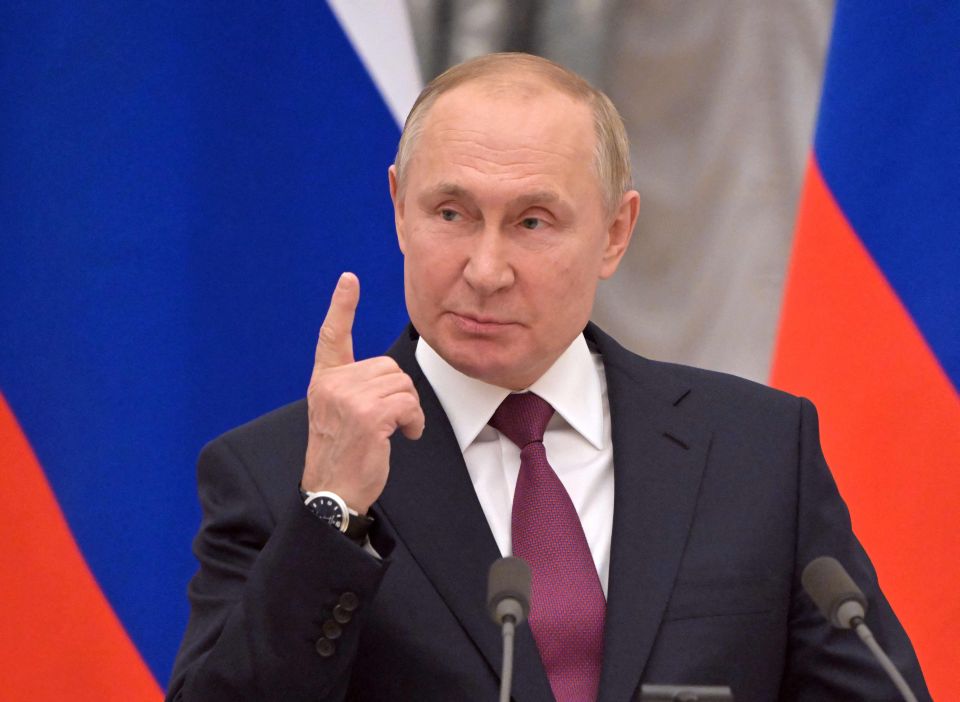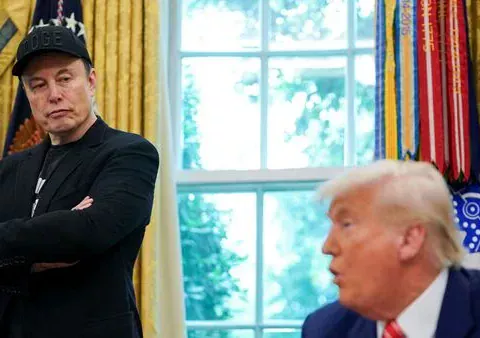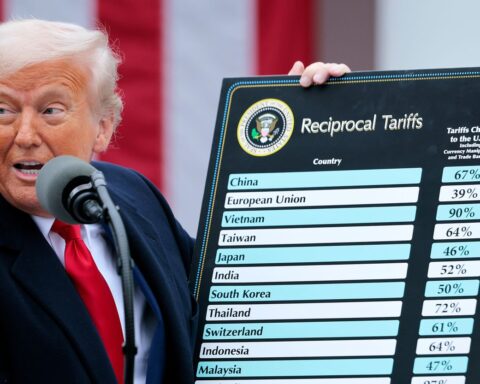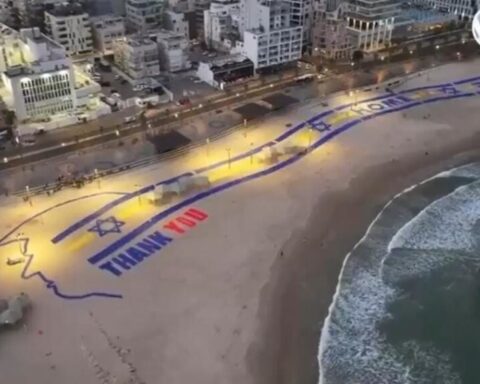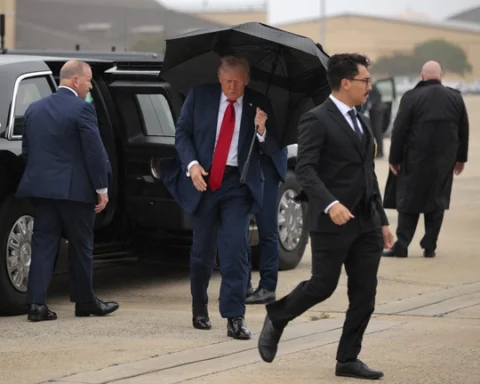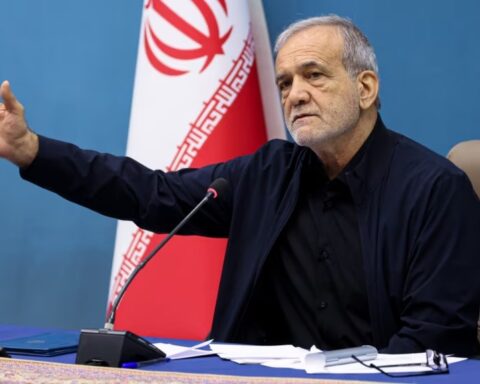Russian President Vladimir Putin has just called President Donald Trump’s bluff on Ukraine, employing what analysts are dubbing the Russian art of the “no” deal—a masterful display of diplomatic stalling that has left Trump’s ceasefire ambitions teetering on the edge.
In a highly anticipated phone call, Trump sought a 30-day ceasefire to halt the three-year war, only for Putin to agree to a limited pause on energy strikes while rejecting the broader truce, swiftly followed by renewed attacks that underscored his defiance. This calculated move has exposed the limits of Trump’s deal-making prowess, raising questions about U.S. influence and Ukraine’s fate as both nations trade accusations of bad faith. Drawing from extensive media coverage, this article dissects Putin’s strategy, the call’s fallout, and the precarious road ahead.
The pivotal moment arrived on March 18, 2025, when Trump and Putin spoke for nearly two hours, a conversation touted by the White House as a step toward peace. By March 19, however, the fragile agreement unraveled as Ukraine reported over 40 Russian drones striking civilian targets, while Russia claimed Ukrainian drones hit an oil depot in Krasnodar.
The call, Trump’s first major diplomatic test since his January 20 inauguration, aimed to secure a full ceasefire—a promise central to his 2024 campaign. Instead, Putin’s partial concession and immediate escalation have left observers debating whether Trump misjudged his Russian counterpart or if Putin exploited the talks to buy time, as Russian forces press their advantage in eastern Ukraine.
The Call: High Hopes, Limited Gains
Trump entered the conversation with characteristic bravado, confident his rapport with Putin could end the war. CNN reported that he pushed for a 30-day cessation of all hostilities, a plan Ukraine’s President Volodymyr Zelenskyy had endorsed days earlier. Putin, however, agreed only to halt attacks on Ukraine’s energy infrastructure—a narrower scope that preserved Russia’s battlefield momentum. The White House hailed it as a “first step,” with Trump telling Fox News’ The Ingraham Angle, “We had a great call. It lasted almost two hours.” Yet, the Kremlin’s readout, per NBC News, revealed Putin’s true intent: a demand to end Western military aid to Kyiv, a condition Trump sidestepped in public comments.
The New York Times noted that Putin’s energy pause was a tactical concession, not a commitment to peace. With winter waning, Russia’s prior focus on crippling Ukraine’s grid had less urgency, allowing Putin to appear cooperative without sacrificing leverage. Hours later, Zelenskyy’s Telegram post—“Russia is attacking civilian infrastructure and people—right now”—laid bare the deal’s fragility. Fox News reported Putin’s additional offers, like a 175-prisoner swap and safe surrender for Ukrainian troops in Kursk, as “gestures of goodwill,” but these too came with strings, signaling a pattern of minimal compromise masked as magnanimity.
Putin Just Called Trump’s Bluff on Ukraine with the Russian Art of the “No” Deal
The subheading captures the essence of Putin’s gambit: he called Trump’s bluff on Ukraine with the Russian art of the “no” deal, a strategy of agreeing just enough to avoid a flat rejection while advancing Russia’s goals. CNN’s analysis dubbed it a “painfully predictable lesson” in Kremlin diplomacy—offering a veneer of progress to placate Trump, then resuming aggression to test his resolve. The overnight strikes, detailed by Reuters, included Russian drones hitting hospitals in Sumy and homes in Kyiv, while Ukraine’s alleged attack on a Russian oil facility suggested neither side was fully honoring even the limited pact.
This isn’t Putin’s first rodeo. The New York Times recalled his 2022 talks with European leaders, where vague promises dissolved into intensified assaults. Here, he dangled “working groups” for future discussions—a diplomatic euphemism for delay, per CNN—while rejecting the ceasefire’s substance. Trump’s team, including Vice President J.D. Vance and Secretary of State Marco Rubio, who joined the call, seemed unprepared for this sleight of hand. NBC News quoted Kristine Berzina of the German Marshall Fund: “It’s a very small step forward,” overshadowed by Putin’s refusal to cede ground, leaving Trump’s “art of the deal” outmatched by Russia’s art of the “no.”
Ukraine’s Dire Straits: A Ceasefire in Name Only
For Ukraine, the call’s aftermath was a bitter pill. Zelenskyy, who had hoped for Trump’s clout to force a broader truce, instead faced a Russian barrage that killed at least one civilian and damaged critical infrastructure. The BBC reported air raid sirens echoing across Kyiv, a stark reminder of the war’s toll—over 2,500 soldiers from both sides die weekly, Trump claimed on Truth Social. Ukraine’s Foreign Ministry accused Putin of exploiting the talks to regroup, a sentiment echoed by Zelenskyy’s call for global rejection of Russia’s tactics.
The New York Times highlighted Ukraine’s vulnerability: U.S. military intelligence sharing, a lifeline against Russian advances, was suspended weeks ago, per NBC News, possibly enabling the latest strikes. Kyiv’s retaliatory drone attacks on Russian oil depots, as reported by Reuters, showed defiance but risked escalating tensions further. Zelenskyy’s plea for inclusion in talks—voiced in a BBC interview—underscored his fear of a U.S.-Russia deal sidelining Ukraine, a prospect made more real by Trump’s refusal to discuss aid cuts publicly, despite Putin’s insistence.
Trump’s Diplomatic Tightrope
Trump’s optimism clashed with reality post-call. On Fox News, he avoided mentioning aid, saying, “We didn’t talk about aid at all,” contradicting the Kremlin’s claim it was a key condition. This disconnect, noted by Reuters, suggests either a communication gap or a deliberate dodge to maintain leverage. Trump’s envoy Steve Witkoff had earlier told CNN the talks were “positive,” but the rapid breakdown exposed a miscalculation. The New York Times speculated that Trump’s past warmth toward Putin—evident in their “friendly words” last week, per The Guardian—may have blinded him to Russia’s strategic rigidity.
The administration now faces a choice: escalate pressure or concede more ground. Fox News reported Trump’s prior threat of “large-scale sanctions and tariffs,” yet his post-call silence on enforcement hints at hesitation. Analysts like Maria Snegovaya, cited by Reuters, argue Putin sees the energy pause as a win—easing economic strain from Ukrainian strikes on Russian fuel—while preserving military gains. Trump’s next move, whether doubling down or pivoting, will define his foreign policy legacy early in this term.
Russia’s Upper Hand: Battlefield and Beyond
Russia’s position strengthens with each passing day. The New York Times noted its advances in Donetsk, bolstered by a war economy shrugging off Western sanctions. Putin’s limited concessions—energy pause, prisoner swaps—cost him little, as Fox News pointed out, while drone strikes signal his willingness to defy Trump’s expectations. The BBC reported Russia’s aviation agency grounding flights after the Ukrainian oil depot attack, a minor disruption compared to Ukraine’s battered infrastructure.
Putin’s broader demands, per NBC News, include international recognition of annexed territories and a NATO ban for Ukraine—terms Kyiv and its allies reject outright. The New York Times suggested he’s testing Trump’s resolve, leveraging the president’s pro-Russia leanings to extract concessions. Posts on X reflect this, with users speculating Putin “played him like a fiddle,” a sentiment CNN’s analysis amplifies: “For millions of Ukrainians, [Trump’s] next choice defines their lives.”
Global Echoes and Domestic Stakes
The international fallout was swift. European leaders, per the BBC, expressed dismay as the ceasefire crumbled, urging stronger support for Ukraine. NATO’s Mark Rutte, after meeting Trump, told Fox News the president’s push was “extremely helpful,” but the strikes undermined that optimism. In the U.S., Trump’s approach split opinion. Fox News praised his “tough stance,” while CNN reported Democratic fears of a pro-Putin tilt weakening Kyiv. A New York Times poll showing 54% disapproval of Trump’s early-term handling hints at domestic risks if the Ukraine crisis festers.
The Jeddah talks, set to address a Black Sea maritime ceasefire, now hang in the balance. Reuters suggested they could salvage some progress, but Putin’s actions cast a long shadow. The New York Times predicted a critical spring, with Russia’s response to U.S. pressure—and Ukraine’s resilience—shaping the war’s next phase.
The Art of the “No”: Putin’s Long Game
Putin’s strategy is clear: offer just enough to keep talks alive, then tighten the screws. The New York Times likened it to a chess master sacrificing a pawn for position—here, a temporary energy pause for battlefield dominance. CNN’s “no deal” framing captures his knack for appearing amenable while pursuing victory, a tactic honed over decades. Trump, the self-styled dealmaker, faces an adversary focused not on U.S. relations but on crushing Ukraine, a mismatch CNN calls “dizzying.”
For Ukraine, the stakes are existential. Each strike erodes its capacity to resist, amplifying Zelenskyy’s global pleas. Trump’s administration, meanwhile, must recalibrate—whether through sanctions, aid restoration, or a harder line with Putin. The Russian leader’s bluff-call has laid bare the war’s brutal calculus: peace remains elusive when one side sees only triumph.
This article is based on reporting from BBC, CNN, NBC News, Fox News, the New York Times, Reuters, The Guardian, AP News, and other outlets, providing a comprehensive view of a diplomatic dance turned deadlock.




